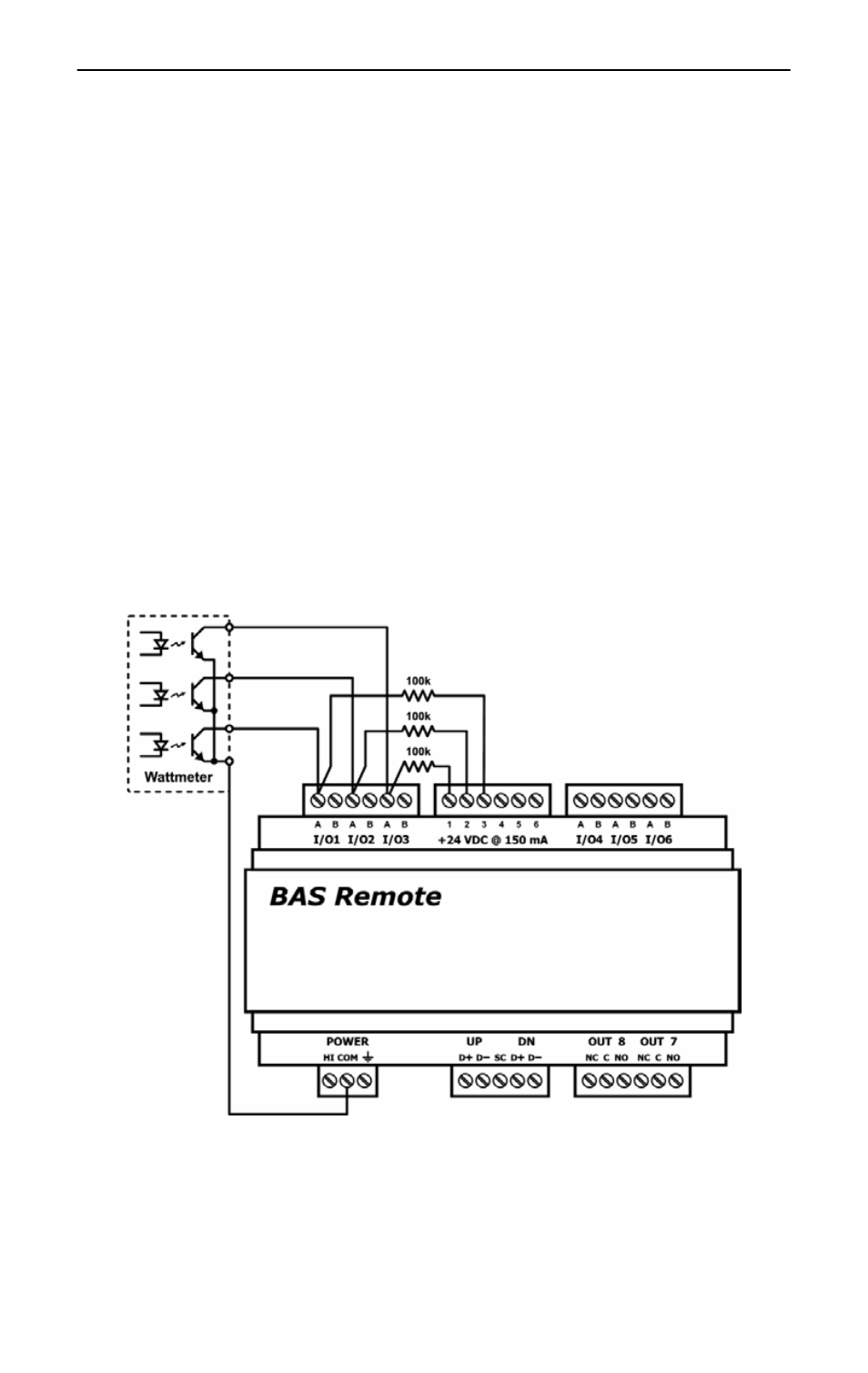Pulse inputs – Contemporary Control Systems BASremote Installation Guide User Manual
Page 15

TD040300-0II
15
Pulse Inputs
A variation on contact closure inputs is pulse inputs. In this situation speed is
critical so the input filtering that limits the time response is removed. When
an input is configured for Pulse Input, a pulse rate up to 40 Hz can be
measured, assuming a 50% duty cycle. The pulse device could have an opto-
isolated open-collector NPN transistor output stage like the one identified
under Contact Closure, or it could provide an active sinusoidal output signal
that needs to be detected. Data is in the form of accumulated pulse count.
The Pulse Input voltage range is 0–10 VDC and the installer can set both the
low-threshold and high-threshold on the Pulse Input web page. The difference
in the two thresholds is the hysteresis. You can detect sinusoidal input signals
by setting the high threshold below the positive peak and the low threshold
above the negative peak. Setting the two thresholds well toward the centre of
the sinusoidal waveform (rather than near its peaks) offers some noise immunity.
It is not necessary for the input signal to swing from zero to 10 V. Any
substantial swing within this range can be detected. The input impedance
using Pulse Input is 100 kΩ. Connect the output of the pulse device to point A
and the common to BAS Remote common as shown in Figure 13.
Figure 13 — Pulse Input Connections
The pulse output could be sinusoidal with no DC offset so the BAS Remote
could experience both positive and negative excursions of the signal.
The BAS Remote can only detect positive voltages so the negative
